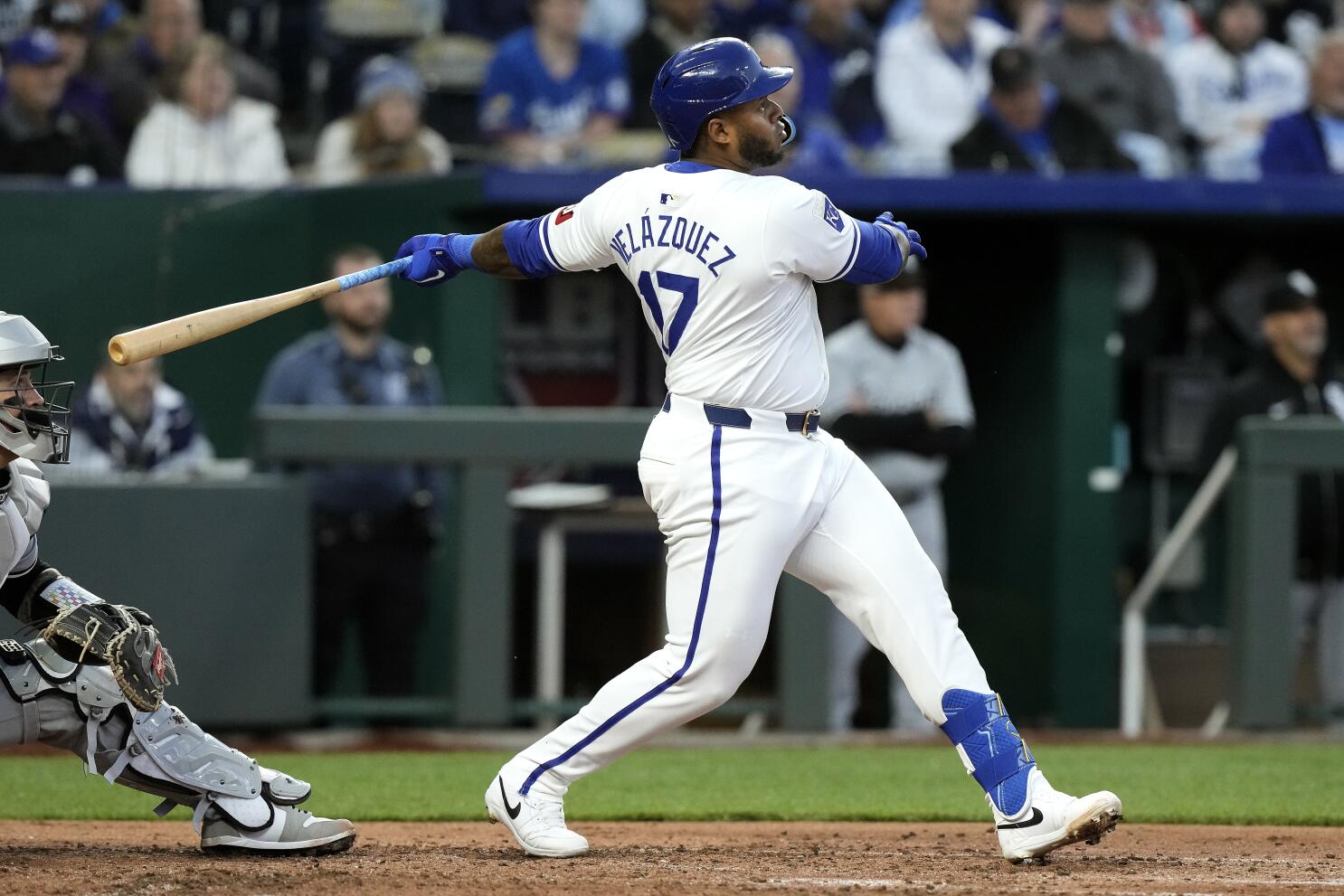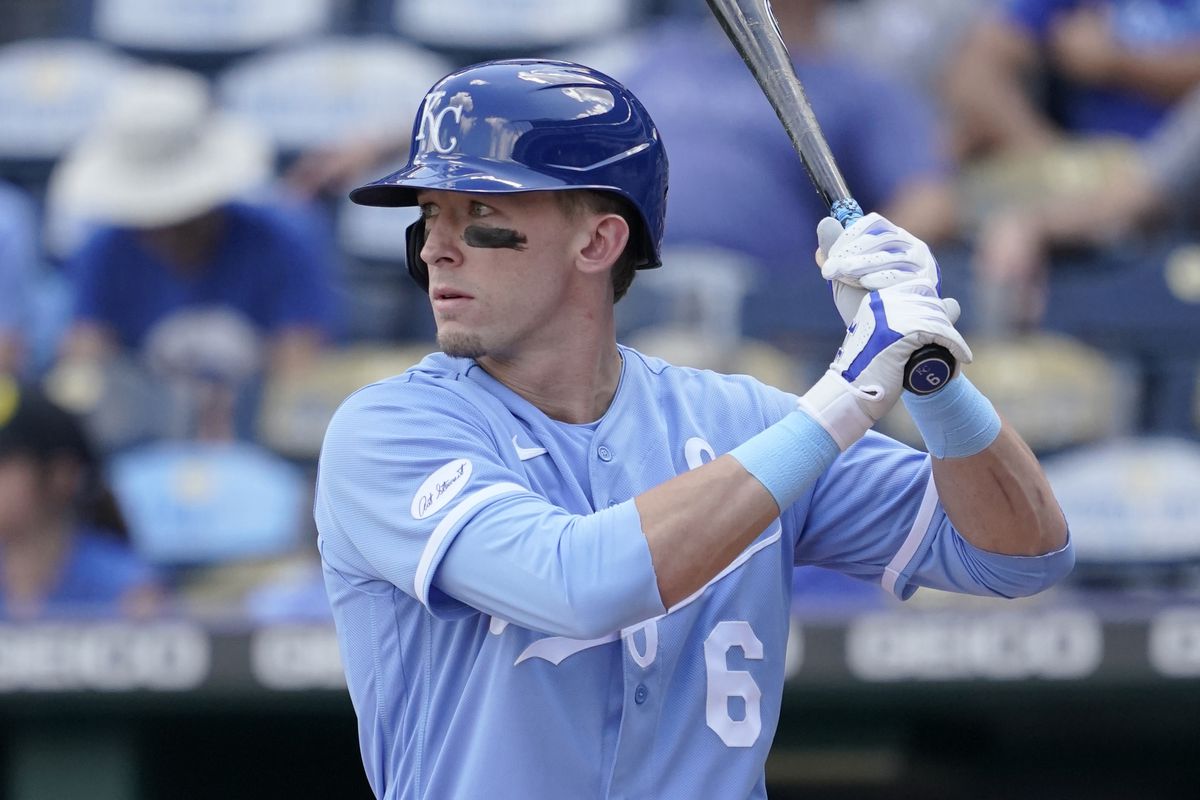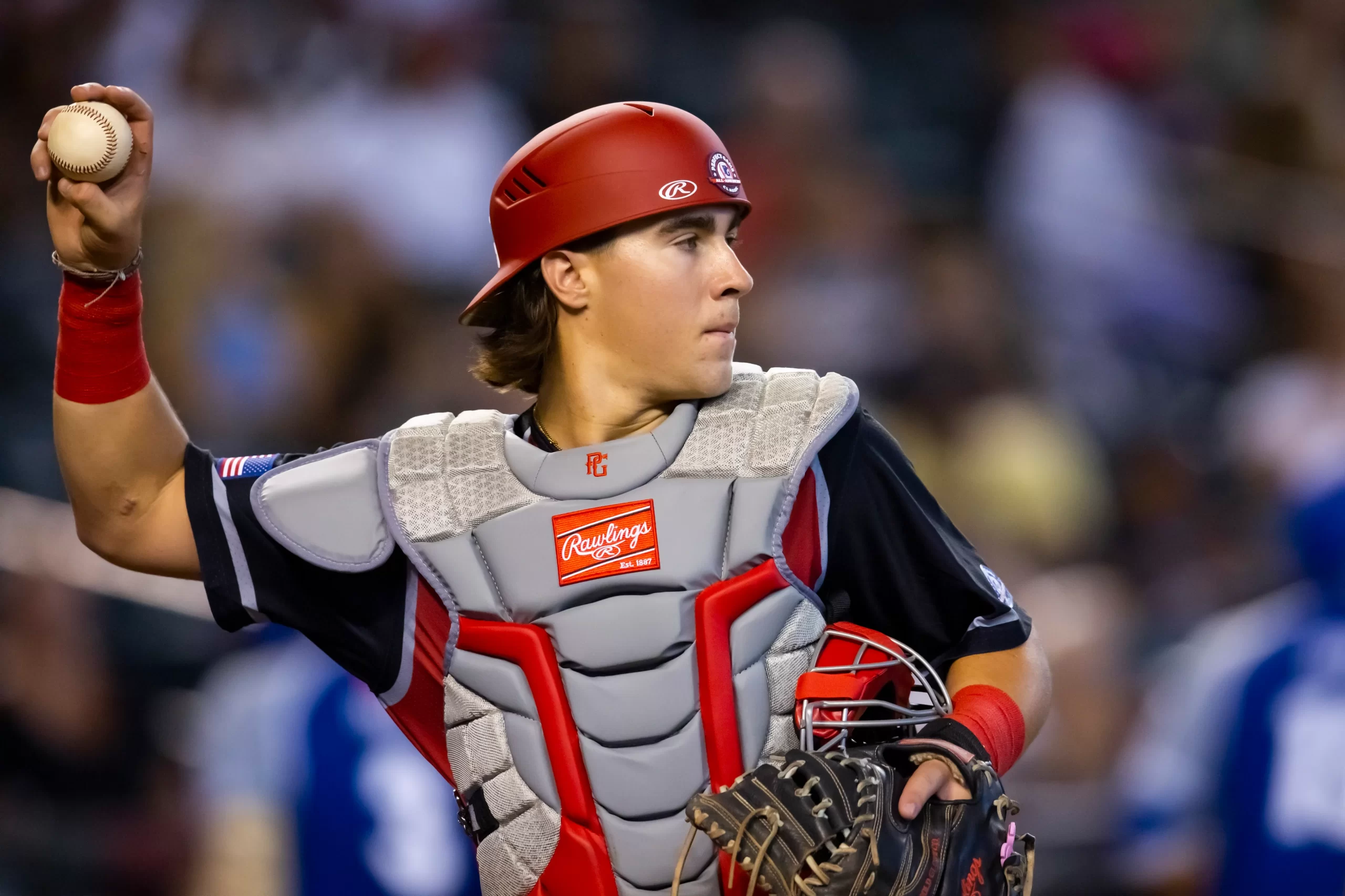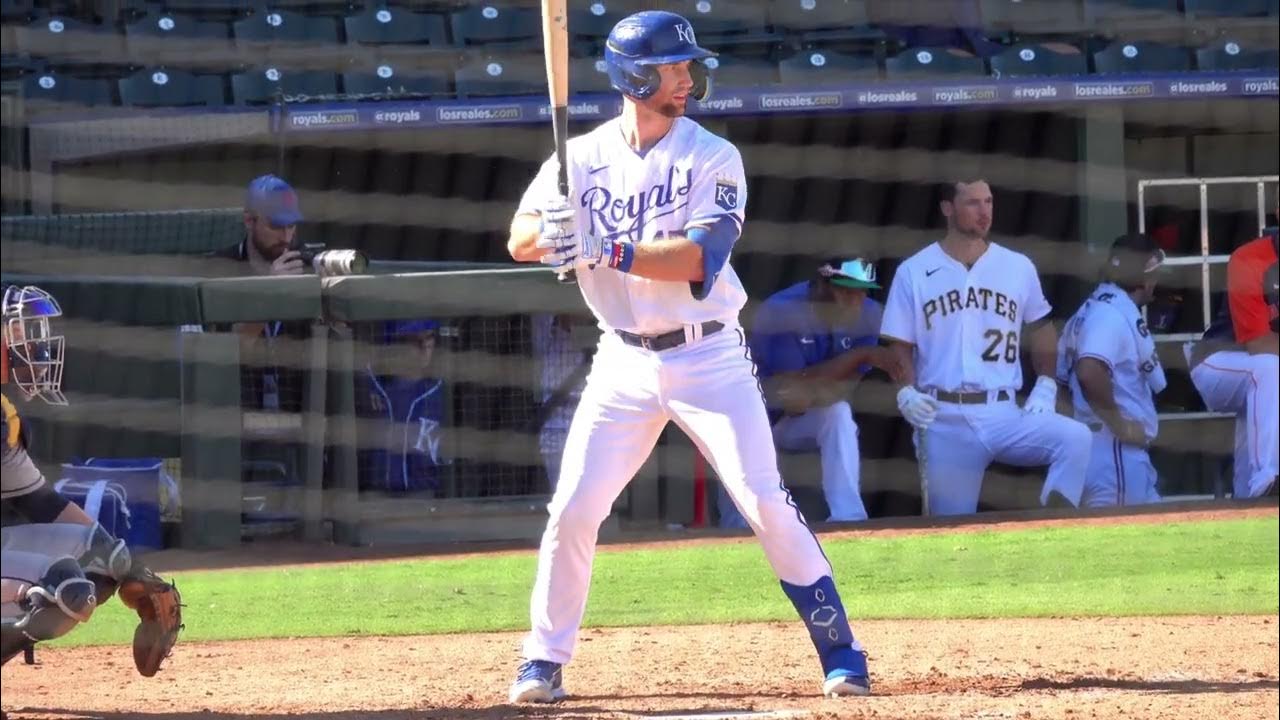One of the best performers this spring for the Kansas City Royals has been pitcher Alec Marsh. The 25-year-old starter has appeared in four games this spring, pitching in 10.0 total innings. He owns a microscopic 0.90 ERA in that span with 12 strikeouts and four walks. Spring ERA rarely translates to the regular season, but usually, strikeout and walk rates correlate well to regular season results. For Marsh, this spring has been the next step toward fulfilling his former top-prospect status.
In 2023, Marsh struggled in the big leagues with a 5.69 ERA over 74.1 IP. His 5.70 FIP wasn’t any better, but he was much better as a bulk-man reliever. When pitching in relief, Marsh’s ERA was 3.92 over 39.0 IP. That’s vastly improved compared to his 7.64 ERA in 35.0 IP as a starter. Looking again to spring training, Marsh has continued that success from last season. More importantly than his ERA or win-loss record, Marsh has consistently been touching the upper 90s all spring. He’s passed the eye test in each outing. It’s been a roller coaster ride for Alec Marsh — the prospect — but what does it mean for his future?
A look back at Alec Marsh’s prospect status out of the MLB Draft
For anyone following the Royals’ minor league system in any sort of detail since 2020, Marsh isn’t a new name. For others, who maybe don’t pay attention beyond the consensus top arms, he may have been a slight surprise in 2023. He joined the system as the first pick in 2019’s Competitive Balance Round B. In simpler terms, he was the 70th overall selection in the draft. At that time, nearly all the hype surrounding the Kansas City farm system involved their quartet of promising young college pitchers. Brady Singer, Daniel Lynch, Kris Bubic, and Jackson Kowar headlined the farm system’s pitching talent.
Marsh joined the top 30 in 2020 as the team’s 22nd overall prospect, according to MLB Pipeline. When drafted, it was seen as a slight reach to some. Marsh ranked as the 102nd-best draft prospect that season out of Arizona State. He was fresh off his third season with the Sun Devils. That college season, he had 101.1 IP with a 3.46 ERA, 99 strikeouts, and 36 walks. He wasn’t a dominant strikeout arm — sat around 92 mph with his fastball — and had average command of the strikezone. There had been glimpses of strikeout dominance in a small Cape Cod League sample in 2018, but that didn’t carry over to his Junior season.
Early minor league success followed by a slight detour with Royals ties

Marsh made his minor league debut in 2019 at rookie ball. Pitching for the then-Royals affiliate, Idaho Falls Chukars, he made 13 starts. He had a somewhat mediocre 4.08 FIP, but showed off impressive strikeout ability and command. It was a small sample against much younger competition, but Marsh’s 3.0% walk rate was great — especially alongside his 28.8% strikeout rate. Then, post-2019 the pandemic shut everything down.
During the cancelled 2020 minor league season, Marsh pitched in the independent Constellation Energy League. The league played their games in Sugar Land, Texas during the cancelled MiLB season and paid minor league players $1600 each month they played. Marsh appeared in just three games (4.0 IP) for the Eastern Reyes del Tigre. There were plenty of Royals ties, including Brett Eibner, Andrés Machado, and — most important of all — manager Dave Eiland.
Marsh spent a short time with Eiland, who was the Royals pitching coach from 2011-2017. Eiland worked with a bevy of successful Royals prospects in his tenure, including Yordano Ventura, Danny Duffy, and relievers such as Kelvin Herrera and Greg Holland. Something started to change for Marsh right around this time. It was a small sample, but Marsh struck out six in his four innings of work for Eastern. More important was the development in his repertoire and what followed the next season for Northwest Arkansas.
Early changes for Marsh after turning pro, followed by injury
Between his 2019 and 2020 seasons, Alec Marsh vastly improved his velocity. He went from sitting around 92 mph (touching 95 at times) for the Sun Devils to pumping mid-to-upper 90s consistently in the Royals farm system. He didn’t hit triple digits, but he started touching 99mph regularly in starts. More often, he sat around 95-97mph. The improved velocity — paired with his deep arsenal and good movement on his pitches — turned Marsh into a strikeout force.
In 2018 for Arizona State, Marsh struck out 8.0 hitters per nine innings. In 2019, that mark improved slightly to 8.8 prior to being drafted. With the added velocity in the Royals system, Marsh struck out 10.3 batters per nine innings for the rookie ball Chukars. By 2021 for the Double-A Northwest Arkansas Naturals, he was all the way up to 14.9 SO/9. All of a sudden Marsh had transformed from a back-end starter prospect into one of the best pitching prospects in the entire farm system. He was ranked as the team’s 12th best prospect in 2021. Then, injury stepped in the way of progress.
David Laurila of FanGraphs took a deeper look at Marsh in August of 2023. The main focus was Marsh’s “weird” fastball (which I’ll come back to shortly) but just as interesting was Marsh’s statements on his 2021 injury and how that impacted his development. It was a biceps injury in 2021 for Marsh. He pitched in just 25.1 innings for the Naturals that season. By the end of the season, between the pandemic and injury, Marsh was three years removed from college with just 58.2 affiliated innings under his belt. Then, on top of it all, he had to re-work important aspects of his delivery that had helped him with command and pitch effectiveness.
“Two years ago, when I was throwing that hard… I mean, I ran into velo for about a year before I got hurt [a biceps injury in 2021], but I never really touched 100 [mph]; I touched 99 maybe once a start. My vertical and horizontal were pretty elite back then. I would touch 20s and be around 8–10 horizontal. When I came back from injury, I started really cutting the ball. I don’t know if it was because of a trust factor of pronation and stuff like that, but when I was in Double A last year, I gave up a ton of hits and home runs on fastballs, just because I was in that super hittable zone of 93–94.”
Alec Marsh on his injury, from FanGraphs
Reworked mechanics have slowed the development for Marsh to this point
Pronation by a pitcher is the rotation of the forearm and wrist after the pitch. Top Velocity has way more information on that than I could possibly give you here, if you’re interested. Long story short, Marsh used pronation in his mechanics to both maintain command and create spin and movement with his arsenal. After the biceps injury, Marsh had to find ways to adjust his mechanics — specifically with less of that pronation. The immediate returns were ugly, but more understandable in context. In his return to Northwest Arkansas in 2022, Marsh pitched a career-high 124.1 IP. 114.1 of those was with the Naturals where he owned a 7.32 ERA.
He still struck out plenty of hitters (26.4%) and his walk rate (11.3%) was actually lower than his strong Double-A debut in 2021. The largest difference was home runs and hard contact. Marsh allowed 2.13 HR/9 in 2022 for the Naturals. Opponents hit .288 against him. Marsh elaborated more on that season in the FanGraphs interview I mentioned earlier:
“I think I was chasing the vert numbers so much that it almost made it worse. That kind of haunted me all season, because it was the only thing I was looking for. I didn’t want to work on other pitches or fix anything else; I was just focused on trying to fix the fastball.”
With more context in mind, the light is finally at the end of the tunnel
Much of 2022 and even into 2023, there were a lot of questions around “what happened to Alec Marsh?” He was such a promising prospect in 2019 into 2021, but it fell completely off the rails in 2022. Now, with more context behind the injury, the cause of those struggles is much more clear. That context should make 2023 and Marsh’s showing thus far in spring training even more promising. Marsh was again in Northwest Arkansas last season and struggled at times. However, he had a 4.07 FIP by the time he was promoted to Omaha. He allowed ten percent less home runs per fly ball compared to his disastrous 2022.
In Omaha, the results were even better, resulting in a quick promotion to Kansas City. Then, the home runs haunted Marsh again. Over 74.1 major league innings last season, Marsh allowed a 1.94 HR/9. As a starter (35.1 IP), Marsh allowed a 3.31 HR/9. In 39.0 innings of relief, that mark was all the way down to 0.69. Is Marsh destined to become a reliever at the next level? Or did pitching in smaller outings allow him to refine his mechanics enough to allow him to be more successful? My money is on the latter. In one of his best outings of the season on September 13, Marsh threw 24 4-seam fastballs. His average spin rate was well over 2400 and White Sox hitters made contact on just 60% of them thrown in the zone.
Averaging 15 inches of vertical break and 11 inches of horizontal break, Marsh’s fastball was seriously improved as the year went on. Other pitchers with similar movement and spin on their 4-seamers last season? Andres Muñoz, Max Scherzer, and Sandy Alcantara. At 94 mph on average, if Marsh could just find a few ticks more velocity on his fastball, it could become an elite offering once again (as we saw back in 2019 and 2021). He’s done just that so far in Spring Training.
It’s been a long, hard journey for Alec Marsh to reach this point, but he’s finally on the cusp of major league success. He’s far from the pitcher he was back in 2019 for Arizona State. Hell, he’s nowhere near the pitcher he was in 2022 for the Naturals. So much has changed, for better or for worse. The path to this point has been full of detours and challenges, but 2024 could be the season it all comes together for Marsh. He’s forced his name into the fifth starter conversation so far in Arizona, and has perhaps a better case for that chance than either of his counterparts, in Daniel Lynch or Jordan Lyles. Only time will tell, but Marsh looks like he’s more than up to the task if given the chance.
Image credit: Kyle Rivas, Getty Images








